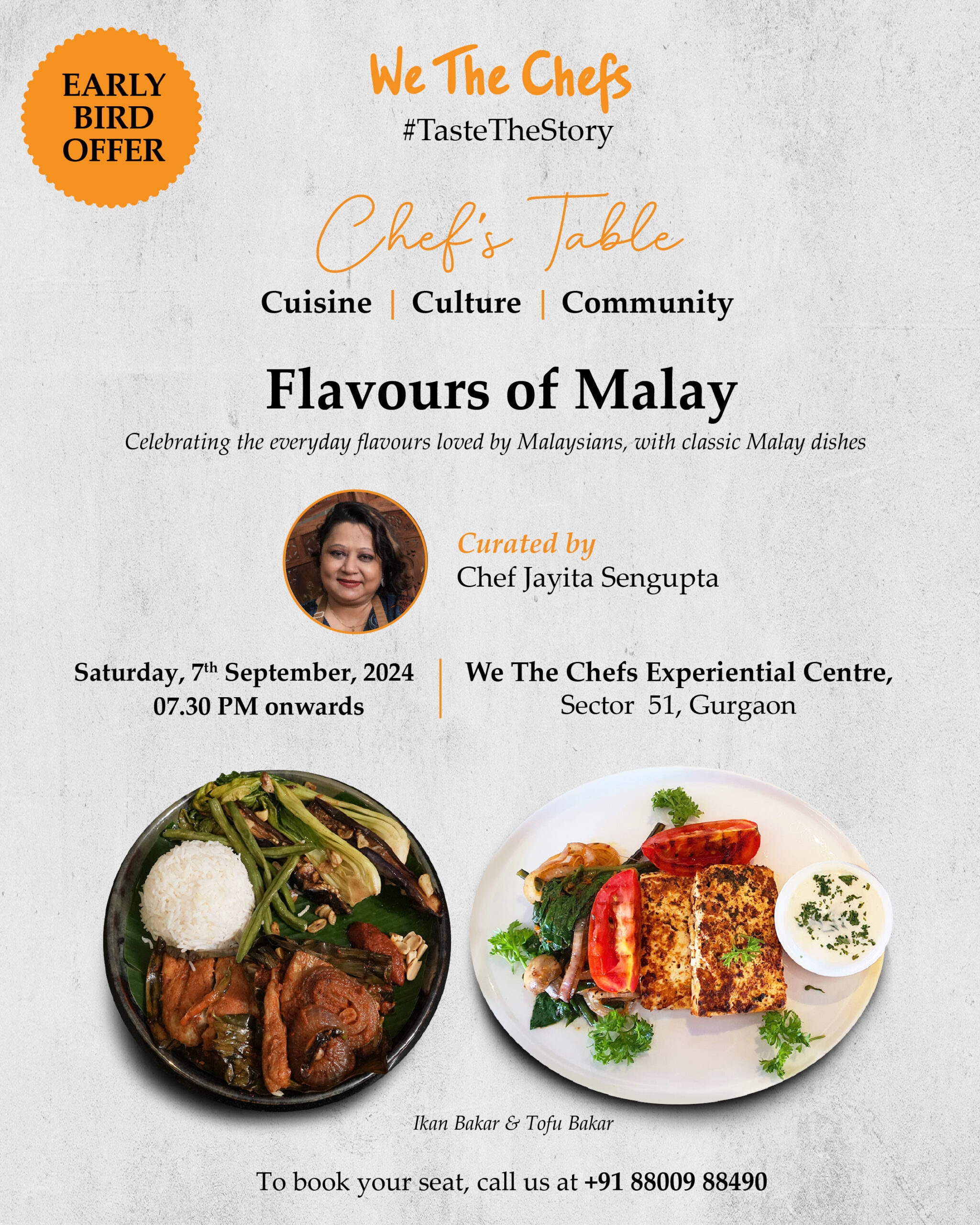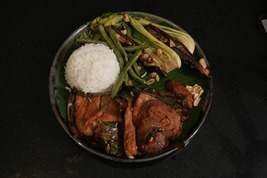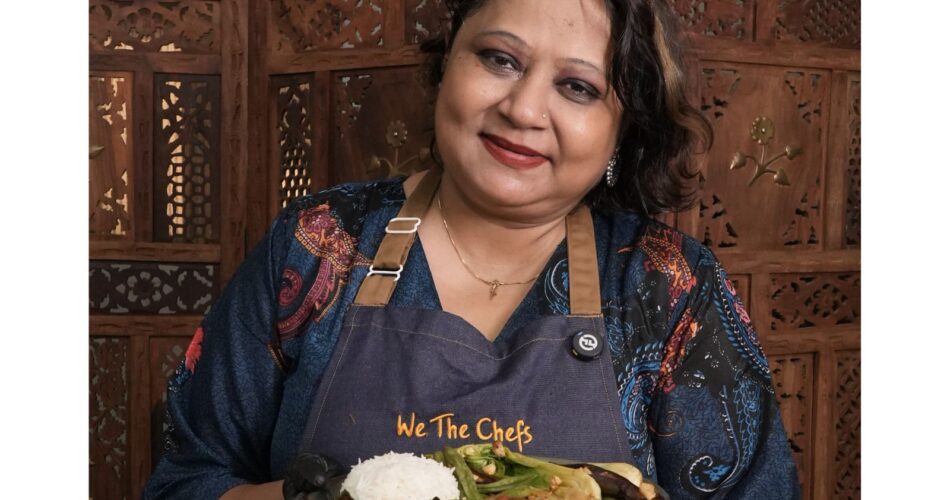The ten-odd years that Jayita Sengupta spent in Penang, Malaysia, left an indelible imprint on her cooking repertoire. It made her understand the nuances of a cuisine that may seem familiar to us, but is not even half as popular as Chinese and Thai. It’s Malaysian, a culinary tradition born out of the melting pot of Malay, Chinese and Tamil cultures, which is what defines the personality of the South-East Asian nation, and it is waiting to be discovered in India.
Jayita grew up in Kolkata, pursued a corporate career for 20 years and is now a multi-talented home chef operating out of Gurugram, as much at home laying out a Bengali treat as she is about explaining the finer points of Malaysian cuisine, helping us navigate kitchens redolent of the flavours of a nation steeped in diversity. As she puts it, “Malaysia is one nation with three major cuisines – Malay, Chinese and Tamil.” There’s some Portuguese influence as well, especially in the use of coriander and eggs. But it is limited to Malacca, a state in the southern part of the Malayan Peninsula that was conquered by the Portuguese Governor-General of Goa, Afonso de Albuquerque, in 1511.
On Saturday, September 7, Jayita will open up this umami-packed world (minus the cuisine of Malacca, which is in a league of its own) at her Chef’s Table in the We The Chefs Experiential Centre in Gurugram.

Speaking on ‘Food Talk with Sourish Bhattacharyya’, a weekly feature of the We The Chefs YouTube channel, Jayita said she was surprised when owners of houses they were checking out to rent in Penang asked her if she intended to cook at home. That was when she found out that Malaysians prefer eating out to cooking at home – it’s only during festivals, such as the Chinese New Year, that they cook at home.
Jayita got to understand this tradition better when she started working with an UN-aided agency, where she discovered that Malaysians divide their day around well-defined meals –breakfast, “snacky time”, lunch, dinner and a last bite before going to sleep. In her own words, “Their body seems to have a clock within and they eat according to it.”
The common factor in all their meals is ‘mee’ (noodles), apart from the bubble tea, which is like mandatory at the end, but it is never the same. Apart from learning about the eating habits of Malaysians, and discovering that Penang has nothing called the Penang Curry, which is so popular outside Malaysia, Jayita also started picking up cooking tips from the ladies she saw in action at food courts and in street-side stalls.
We got to see Jayita in action on the set of ‘Food Talk’ when she got down to making Ikan Bakar, or roasted fish (‘ikan’). Malaysians prefer the fleshy stingray or black pomfret for their Ikan Bakar, their favourite evening snack served from stalls that sprout all over in the evenings. These stalls also serve chicken roast, but Ikan Bakar, which is served wrapped in a banana leaf along with pan-sauteed vegetables, clearly tops popularity charts. It will be the highlight of Jayita’s Chef’s Table on September 7, although she’ll be using bhetki keeping in mind what is available in the local market (for vegetarians, she will serve grilled tofu).
The Malaysians start their day with congee (rice porridge) accompanied by condiments or steamed dumplings or just a soup; 10:30 is snacking time, when the favourite is ‘curry puff’, which Jayita describes as “their samosa” with the stuffing being curried chicken (or pork) and egg, or it can be entirely vegetarian, flavoured with curry leaves and curry powder. Lunch is the time to slurp down a bowl of Asam Laksa (“asam has nothing to do with our Assam,” Jayita clarified; it’s the Malay word for tamarind).
Talking about tamarind, Jayita went on to say that the three main flavouring ingredients you’ll always find in a Malaysian kitchen are lemongrass, kafir lime leaves and galangal, the latter being predominant in ‘rendang’, the popular beef curry (Jayita will use mutton instead to prepare this flavourful dish). Apart from these, tomato, garlic and tamarind are commonly used in Malaysian cooking.


At 5:30 sharp, work comes to a halt in Malaysia as people get ready for supper time. “It’s almost as if the clock inside them tells them to stop working and go to the nearest food court,” Jayita says, adding that the last meal the Malaysians have is at 9:30 at night, when they come out of their homes to again congregate at food stalls for their favourite laksa. “They are always eating; you’ll never find a Malaysian who’s not eating,” Jayita said.
The laksa stock is typically made with the head of mackerel fish, but because its flavour is too strong, she’s avoiding it to prepare her Asam Laksa. Hers will be closer to what you get in Singapore.
Jayita has plenty of nuggets of information to offer – from the meaning of ‘mee’ (noodles), ‘nasi’ (rice) and ‘goreng’ (fried) to what actually does ‘tom yam’ refer to: it’s not a particular soup as we believe it to be, but a paste, like the popular ‘sambal’ she’ll be using to make ‘rendang’ apart from desiccated coconut, that can be used to make a fried rice, curry or soup in the Malay-Chinese tradition. Vegetarians who sign up for the September 7 Chef’s Table will get to sample Tom Yam Vegetables served with coconut rice.
The ‘sambal’, Jayita said, is the magic sauce of Malaysian cuisine consisting of dried and deseeded red chillies (deseeded to cut down on the pungency), garlic and galangal, all crushed and cooked together in oil. The best ‘sambal’, she added, was what she could get from the women at the food courts. For the September 7 Chef’s Table, she’s preparing two kilos of sambal – that’s how critical the sauce is to Malaysian cooking – and the red chillies she’s using are the Habaneros.
The conversation ended with ‘rendang’, which Jayita explained is an example of the increasingly rare Nonya cuisine traditionally developed in families emerging out of Malay-Chinese inter-marriages. As these marriages have become rarer than ever, the cuisine, too, is becoming more of a museum piece than a live tradition.
Jayita’s food stories are as delicious as the food that comes out of her kitchen, so the Chef’s Table on September 7 promises to be a complete treat for the senses. And there’s no better way to discover a little-known cuisine than to listen to the stalwart home chef.
To book your seat at the Chef’s Table by Jayita on Saturday, September 7, 7:30 p.m., log on to www.wethechefs.in or call +91 88009 88490

